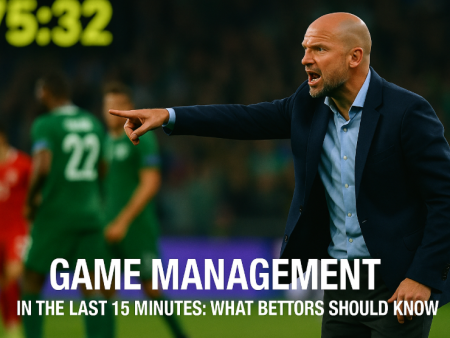Possession has become one of the most visible statistics in modern football. From live match graphics to post-game analysis, it’s a metric fans, coaches, and bettors often use to interpret control and dominance. But the real question is: does possession tell the whole story — especially when money is involved?
For sports bettors, understanding how possession works — and when it misleads — can make the difference between a smart bet and a blind one. This article explores how to use possession data effectively, with real examples and betting insight.
What Possession Actually Measures
In football, possession is the percentage of time a team controls the ball during a match. It’s not just about time on the ball, but how and where that control takes place.
There are two key styles of possession:
- Passive Possession: Holding the ball in non-dangerous areas, often sideways or backward
- Aggressive Possession: Pushing forward with purpose, trying to break down defenses
The stat doesn’t reflect chance creation, risk, or intent. That’s why many bettors learn the hard way: high possession doesn’t guarantee goals or wins.

When Possession Misleads Bettors
Teams can dominate possession but lose the match. The ball may be theirs, but the key moments may not.
Here are real scenarios where possession leads bettors astray:
- A team has 70% possession but only one shot on target — poor attacking execution
- Underdogs concede possession but strike on the counter — efficient with low ball time
- A team “protects” a lead by slowing play — possession goes up, but scoring threat disappears
That’s why it’s important not to bet based on possession alone. Context is everything.
How to Read Possession for Pre-Match Bets
Before a match, reviewing average possession stats over several games can help define team identity. Some are built to dominate the ball. Others let the opponent have it and wait.
Look at:
- Whether the possession stat reflects home or away form
- If the team turns possession into goals or just pressure
- Match-up dynamics — does one team always dominate weaker sides, but struggle against stronger ones?
These factors guide bets such as:
- Match Winner + Under/Over Goals
- Both Teams to Score
- Total Goals or Corners Markets
Using Possession in Live Betting
During a match, possession trends can be powerful — if interpreted correctly. A sudden drop or increase in control often signals a tactical change or momentum shift.
Use it to:
- Anticipate in-play swings (e.g., underdog grows into the game)
- Spot false pressure (high possession, no final-third entry)
- Time bets on goals, corners, or cards as intensity builds
However, combine it with shots, expected goals (xG), and match context for stronger predictions.
Examples: Possession Profiles and Betting Outcomes
Some clubs and national teams are known for their possession-heavy style. But their betting behavior varies.
For example:
- Manchester City: High possession, low card count, strong favorites — often ideal for low-risk combo bets
- Morocco (AFCON): High possession, tight games — often under 2.5 goals
- Al Ahly (Egypt): Dominant possession in league play — common early goals
- Barcelona (early 2010s): Extreme possession — ideal for corner spreads, goal timing bets
Bettors who understand the link between style and outcomes can better anticipate which markets to target.
Possession Is Only One Part of the Puzzle
Possession is a popular stat, but it’s often misunderstood. It doesn’t measure danger, intent, or quality. Still, when paired with match context, team tactics, and betting logic, it becomes a powerful tool.
For smarter bets, stop looking at possession as control — and start seeing it as strategy. Because football is not just about who has the ball, but what they do with it.


